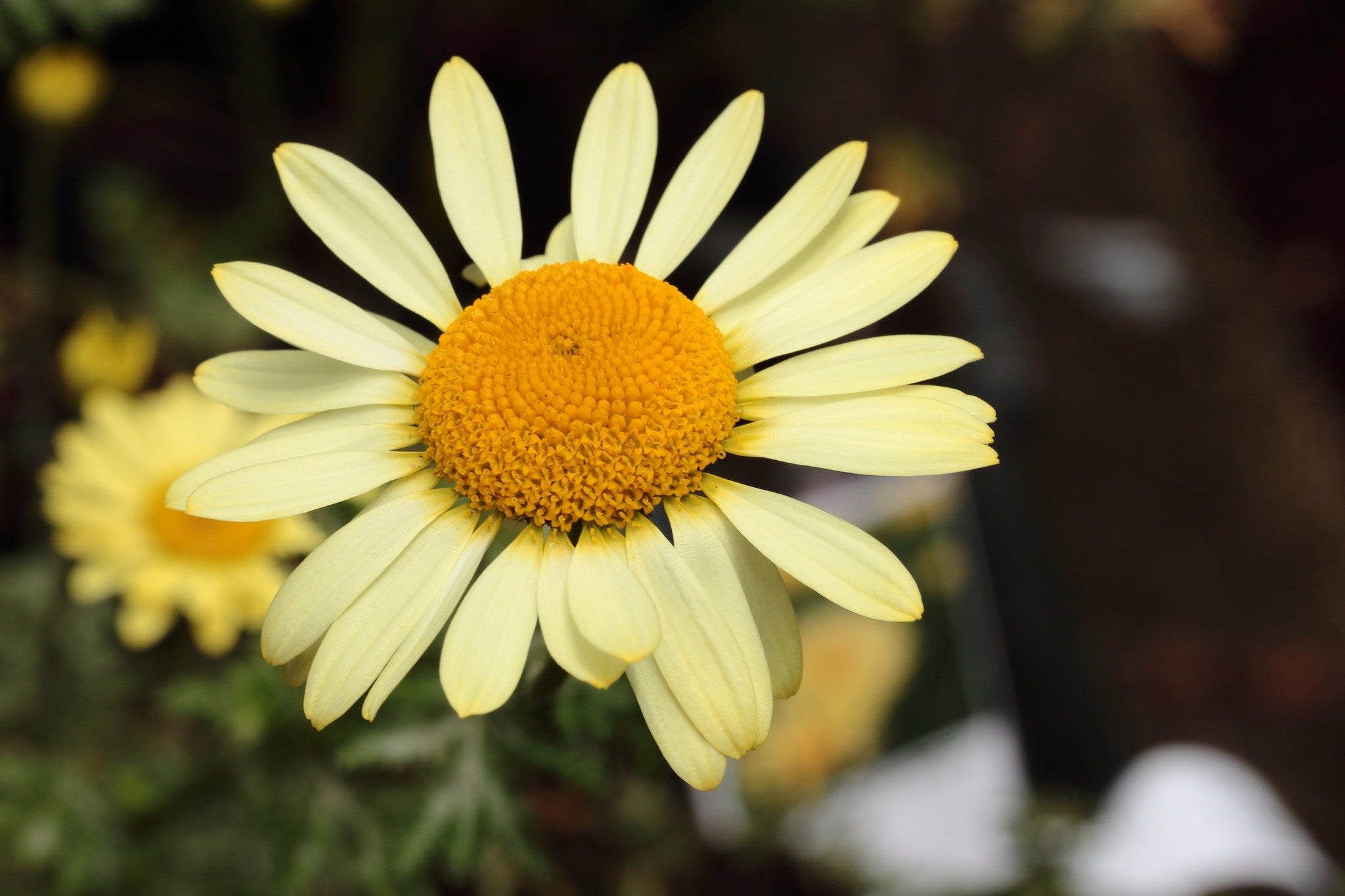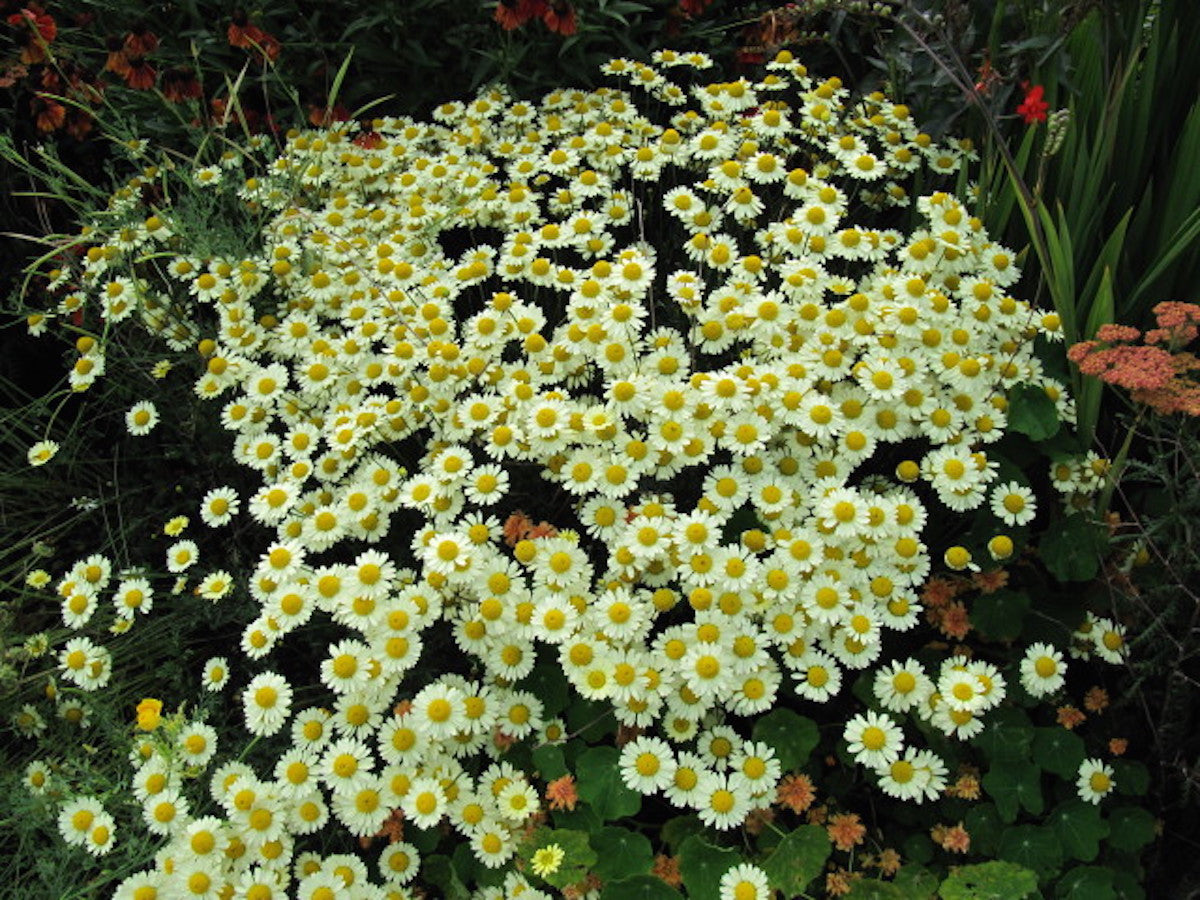Anthemis tinctoria 'E C Buxton'
Approx. 0.5 litre pot
About this cultivar:
Anthemis tinctoria 'E C Buxton' dates from... well... if you search the internet everyone seems to believe it dates back to 1910. But the only evidence I have of that is a Telegraph article by Val Bourne dating back to ...2003. Copy and paste gone mad? Chinese Whispers? Nevermind, I'm sure Val is right. In any case it is a clump-forming perennial with finely dissected green leaves and solitary lemon-yellow daisies. Beth Chatto calls it "One of my best ten garden plants". That is probably all you need to know, forget about dates.
- Position: Full sun, partial shade
- Soil: Almost any soil - grows well in Ballyrobert!
-
Flowers: July, August, September
- Other features: Royal Horticultural Society Award of Garden Merit (RHS AGM)
- Hardiness: Fully hardy - grows well in Ballyrobert!
- Habit: Clump forming, bushy
- Foliage: Evergreen
- Height: 60 - 90 cm (2 - 3 ft)
- Spread: 60 - 90 cm (2 - 3 ft)
- Time to full growth: 2 to 5 years
- Plant type: Herbaceous Perennial
- Colour: Yellow, green
-
Goes well with: Crocosmia, Hemerocallis, or even Dahlias. Also, blue and yellow is another classic combo - so think about Nepeta, Agapanthus, Clematis, Penstemon, and Salvia. Perhaps the best blue comes from its Mediterranean cousin Lavandula.
About this genus:
Anthemis is a genus of aromatic flowering plants in the family Asteraceae, closely related to Chamaemelum, and like that genus, known by the common name chamomile. Some species are also called dog-fennel or mayweed. It gets its name from the Greek 'anqemi`' which is equivilent to 'a `nqos flower' which is what they call....Anthemis!Anthemis are native to the Mediterranean region and southwest Asia east to Iran. A number of species have also become naturalized in the United Kingdom and other parts of the world.
Anthemis was first botanically described by, guess who, Carl Linnaeus, in the 1753 Species Plantarum. Currently there are 222-315 species in the genus. Yes you read that correctly, the margin for error is 222 to 315; almost 50%. Do you evny a taxonomist?
When we talk about Anthemis in the garden we are often talking about hybrids of Cota tinctoria subsp. sancti-johannis (Once though to be Anthemis sancti-johannis) and Anthemis tinctoria. Tinctoria, a Latin word meaning used for dyeing or staining, hints at the previous uses of this plant.
What does this mean for our gardens? It means we are talking perennial, tough, almost fern like fine foliage, in a bushy type plant up to 1 m (3 ft) tall. Cultivars can be evergreen, semi-evergreen, and deciduous. We usually cut ours back anyway... they can be short lived if you don't divide them. But we never seem to have any problems.
The cultivars we have tend to grow in almost any soil. In anywise they enjoy our wet clay. However Anthemis, as their Mediterranean roots suggest, also like the dry and are drought tolerant.
Try them with other hot colours of red, orange, yellow, provided by Crocosmia, Hemerocallis, or even Dahlias. Also, blue and yellow is another classic combo - so think about Nepeta, Agapanthus, Clematis, Penstemon, and Salvia. Perhaps the best blue comes from its Mediterranean cousin Lavandula.
OK, OK, and grasses. But you can say that about anything can't you?




